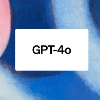To determine whether using discrete semantic entropy (DSE) to reject questions likely to generate hallucinations can improve the accuracy of black-box vision-language models (VLMs) in radiologic image based visual question answering (VQA). This retrospective study evaluated DSE using two publicly available, de-identified datasets: (i) the VQA-Med 2019 benchmark (500 images with clinical questions and short-text answers) and (ii) a diagnostic radiology dataset (206 cases: 60 computed tomography scans, 60 magnetic resonance images, 60 radiographs, 26 angiograms) with corresponding ground-truth diagnoses. GPT-4o and GPT-4.1 answered each question 15 times using a temperature of 1.0. Baseline accuracy was determined using low-temperature answers (temperature 0.1). Meaning-equivalent responses were grouped using bidirectional entailment checks, and DSE was computed from the relative frequencies of the resulting semantic clusters. Accuracy was recalculated after excluding questions with DSE > 0.6 or > 0.3. p-values and 95% confidence intervals were obtained using bootstrap resampling and a Bonferroni-corrected threshold of p < .004 for statistical significance. Across 706 image-question pairs, baseline accuracy was 51.7% for GPT-4o and 54.8% for GPT-4.1. After filtering out high-entropy questions (DSE > 0.3), accuracy on the remaining questions was 76.3% (retained questions: 334/706) for GPT-4o and 63.8% (retained questions: 499/706) for GPT-4.1 (both p < .001). Accuracy gains were observed across both datasets and largely remained statistically significant after Bonferroni correction. DSE enables reliable hallucination detection in black-box VLMs by quantifying semantic inconsistency. This method significantly improves diagnostic answer accuracy and offers a filtering strategy for clinical VLM applications.
翻译:暂无翻译




